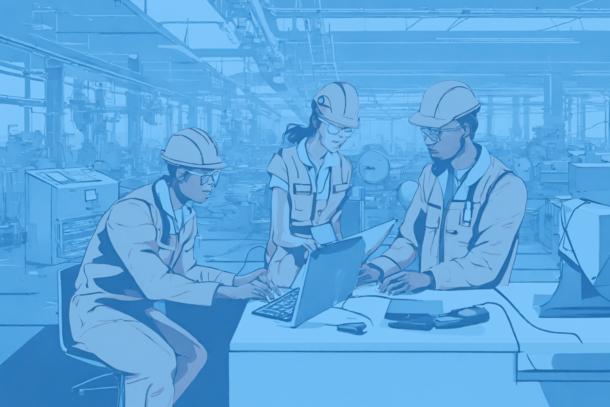By Tim Burge
Recent insights from Bloomberg and the U.S. Bureau of Labor Statistics highlight a pressing issue within the U.S. economy: a notable shortage of skilled tradespeople, especially plumbers, leading to significant service delays and broader economic concerns. This shortfall is not confined to plumbing alone but spans across all trades, including installation, maintenance, and repair sectors. With an estimated 582,100 job openings emerging annually in these areas, the urgency to bridge this gap cannot be overstated.
Historically, trades careers have been deeply rooted in familial traditions, with expertise meticulously cultivated through years of apprenticeship and where knowledge is passed down from one generation to the next. However, as we surge forward in a digital age characterized by swift technological progress, the traditional charm of trades careers has waned, particularly among younger generations. The consequences of this shift are profound, touching not only on the crisis of labor availability but also on the operational efficiency and enduring viability of essential services. Simply put, without skilled technicians in trade jobs, critical aspects of infrastructure cannot be maintained.
However, the rise of emerging technologies is beginning to rectify the problems accumulated from a tradespeople shortage in the United States and beyond. These technologies allow for quicker access to information for these workers, as well as easing the managerial issues found by service managers.

AI as a Catalyst for Change
Artificial intelligence (AI) is emerging as a transformative tool in addressing the labor shortages within the trades. By simplifying troubleshooting and operational tasks, AI technology makes trade jobs more accessible and appealing to a technologically adept generation. This integration not only aims to fill the current gap but also to ensure the sustainability and appeal of trades careers for the future. The automation of complex diagnostic tasks into more manageable procedures reduces barriers for newcomers, enhancing the trade’s attractiveness and easing the pathway for new talent. In lieu of relying on the knowledge of veteran tradespeople — a group of workers retiring in droves from their trade careers —, AI can take the role of a mentor and copilot for those looking for answers on the job.
The Nature of Trade Jobs is Changing
As AI streamlines technical tasks, there’s a notable shift in the trade job landscape towards a more customer service-oriented focus. Customers are expecting more and more out of those they hire to complete their service jobs. This evolution means that soft skills such as communication, empathy, and problem-solving are becoming increasingly crucial. The role of tradespeople is expanding beyond the technical to encompass customer engagement and service, positioning them as both skilled technicians and valuable customer advisors.
This shift, supported by AI, presents an opportunity to redefine the trades, making them not only about technical proficiency but also about building strong customer relationships. By prioritizing soft skills alongside technical knowledge, tradespeople can better meet the evolving needs of their communities, ensuring the profession remains relevant and respected in an increasingly automated world.
Attracting the Next Generation
The average age of skilled tradesmen in the United States is 55, making the oncoming retiring age of many of those in the trades industries a critical issue. Today’s youth are digital natives, and their integration into the trades requires a shift in perception — viewing these careers as not only hands-on but also technologically advanced.
Demonstrating how AI and other digital tools can enhance job performance, efficiency, and satisfaction is essential. By leveraging technology, we can make these jobs more desirable, highlighting the innovative aspects of trade work that align with the interests and skills of younger generations.
Future-Proofing Through Technology
The adoption of AI in the trades also plays a pivotal role in ensuring the longevity and resilience of these services. With technology, we can optimize operations, reduce errors, and enhance service delivery, thus ensuring that the essential services provided by tradespeople remain robust against future challenges.
Moreover, the financial implications of not addressing this gap are significant. Research from AI and data company Aquant indicates that the cost of poor-performing talent can be up to 80% higher than that of top performers. This discrepancy underscores the importance of leveraging AI to not only attract but also retain and train high-performing talent, ensuring the economic viability of these trades.
What the Future Holds
As we navigate the challenges posed by labor shortages in the trades, AI stands out as a crucial ally. Its ability to simplify diagnostics, attract new talent, and ensure the sustainability of essential services highlights the importance of technological integration in the trades. While the implementation of AI and other digital tools represents a departure from traditional methods, it is a necessary evolution to address current challenges and future-proof these vital industries.
The dialogue on integrating AI into the trades is ongoing, and experts are continuously exploring innovative approaches to leverage technology in addressing the labor gap. By embracing AI, the trades can not only overcome current obstacles but also secure a robust, efficient, and sustainable future.
 About Tim Burge
About Tim Burge
Tim Burge, Director at Aquant, specializes in using advanced technologies to address real-world business challenges. With a strong background in the B2B software industry, his ability to merge technical know-how with business needs has made him a vital asset in driving innovation at Aquant, especially in the field service and contact center sectors.

 About Tim Burge
About Tim Burge


Join the conversation: